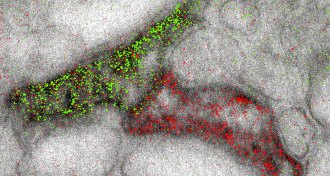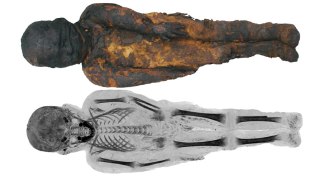Tech
Sign up for our newsletter
We summarize the week's scientific breakthroughs every Thursday.
-
 Science & Society
Science & SocietyReaders respond to the SN 10, and awards for Science News
The human side of science, cool cloth and more in reader feedback.
-
 Tech
TechDouble-charging material makes a run in the sun extra powerful
Textile stores energy from the sun and a person’s movements to power devices.
-
 Tech
TechNew technique shows cells’ molecules in color
A new electron microscopy technique reveals cellular details in multicolor
-
 Tech
TechArtificial intelligence needs smart senses to be useful
Editor in chief Eva Emerson discusses the future of artificial intelligence.
By Eva Emerson -
 Tech
TechFor robots, artificial intelligence gets physical
Physical intelligence makes robots able to sense of the world around them.
By Meghan Rosen -
 Genetics
GeneticsBig biological datasets map life’s networks
Expanding from genomics to multi-omics means stretching data capacity, but it may lead to a future of early diagnosis, personalized medicine and hardy crops.
-
 Tech
TechHow to read a book without opening it
New technique allows scientists to read the pages of an ancient text without opening the book.
-
 Computing
ComputingAI system learns like a human, stores info like a computer
A new artificial neural network hooked up to extra memory can learn to solve complex problems.
-
 Computing
ComputingAI system learns like a human, stores info like a computer
A new artificial neural network hooked up to extra memory can learn to solve complex problems.
-
 Tech
TechCT scans show first X-rayed mummy in new light
An ancient Egyptian child became the first mummy to be X-rayed in 1896. Today, CT scans reveal new insights into the child’s life — and death.
-
 Tech
TechXPRIZE launched new kind of space race, book recounts
'How to Make a Spaceship' chronicles the XPRIZE challenge that helped ignite the private space industry.
By Meghan Rosen -
 Tech
TechWi-Fi can help house distinguish between members
Using Wi-Fi, computers could one day identify individual family members in a smart home.